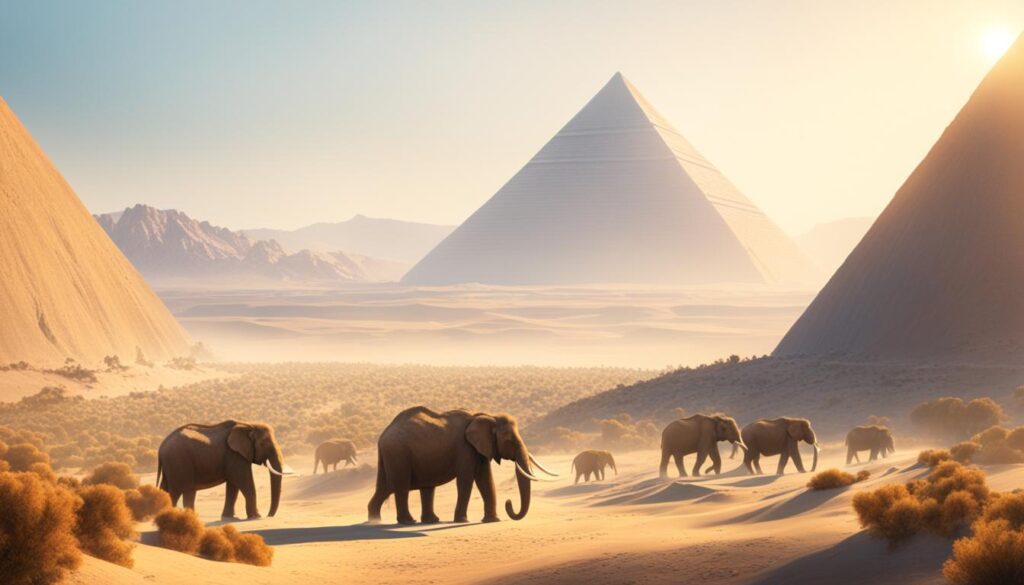Imagine Ice Age giants walking the Earth while ancient humans built huge structures. This wasn’t just in a movie. Woolly mammoths and pyramids shared the same time period. These huge animals, related to Asian elephants, lived with humans when the Great Pyramid of Giza was being built.
The last woolly mammoths lived on Wrangel Island until about 1650 BC. This was almost 1,000 years after the Great Pyramid was finished. These Ice Age animals had thick fur and special body parts to stay warm in the cold.
Key Takeaways
- Woolly mammoths lived during the construction of Egyptian pyramids
- The last mammoths survived until 1650 BC on Wrangel Island
- Mammoths coexisted with ancient civilizations for a short time
- These Ice Age creatures had adaptations for cold climates
- Mammoths were herbivores, similar to modern elephants
The Coexistence of Mammoths and Pyramids

Imagine a world where woolly mammoths roamed the Earth while the pyramids of Giza were being built. This wasn’t just a fantasy but reality. Archaeological evidence proves that these giant creatures lived alongside humans during the construction of ancient Egypt’s pyramids.
Mammoths disappeared from the mainland as the Pleistocene epoch ended. But, small groups survived in isolated places. On St. Paul Island, they lasted until 6,400 years ago. And on Wrangel Island, they survived until 4,000 years ago. This means mammoths were still around when ancient construction techniques were being used in Egypt.
Humans and mammoths shared the planet for thousands of years. Our ancestors used mammoth meat for food and their bones and tusks for tools and shelter. This shows a world where Ice Age remnants met the dawn of human civilization, linking prehistory with the rise of complex societies.
Woolly Mammoths: Ice Age Giants
Woolly mammoths were huge creatures from the Ice Age, as big as today’s African elephants. They weighed about 6 metric tons and had tusks up to 14 feet long. Their fossils still intrigue scientists, giving us clues about life before us.
As the Arctic ice melts, it reveals mammoth bodies, giving scientists new data. These fossils help us understand ancient environments and climates. Early humans used mammoths for everything, from building shelters to staying warm with their hides.
Cave paintings show mammoths were important to our ancestors. They were often depicted, after horses and bison. These artworks help scientists learn how humans and mammoths coexisted, uncovering more about our past.

Leave a Reply